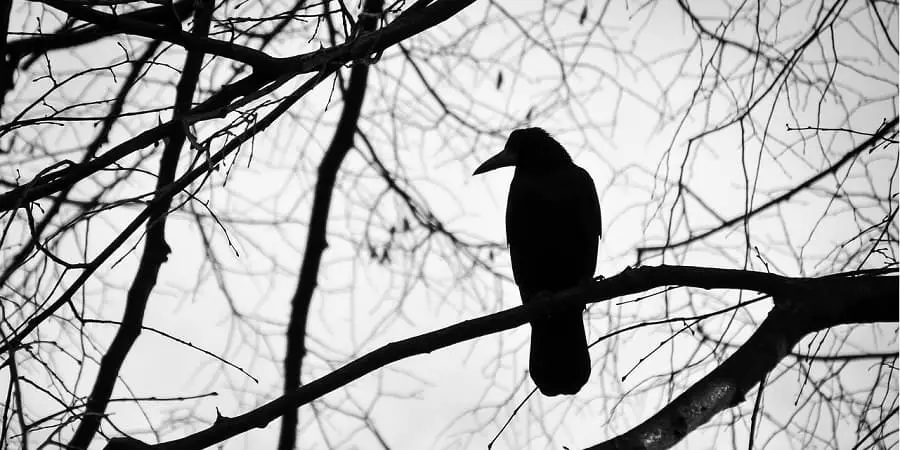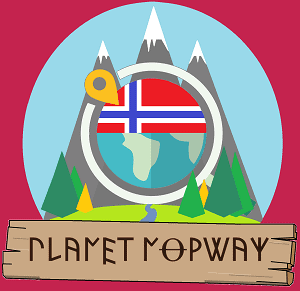The weekday “Wednesday” derives its name from the Old English Wōdnesdæg, which translates to Woden’s day, another name for Odin.
He is an enigmatic god, hard to pin down and understand because his history and personality are built from a wide variety of sources. Whatever your preconceptions about Odin, you will likely find them changed by reading about what we know about him.
You’ll learn he’s more of a cunning and devious god, driven by an independent mind towards wisdom and bloodlust, which come together in what he calls ‘ecstasy.’

Who was Odin?
Odin, also called the Allfather, is one of the most prominent gods in Norse mythology.
Many sources indicate that he was the principal god of worship in North-Germanic paganism (Old English, Saxon, Dutch, and German). He is considered the protector of heroes, with half of all fallen warriors joining him in Valhalla if his valkyries choose them.
He’s the ruler of the Aesir tribe of gods, yet he tends to venture far away from their land of Asgard.
His appearance is that of a tall, older man with a flowing beard and one eye. He is said to have given up his other eye for wisdom. His weapon of choice was a spear, and he wore a wide-brimmed hat with a cloak.
He’s a relentless seeker of wisdom, having said to have given one of his eyes for it. However, he does not value communal virtues such as justice, fairness, or respect for the law.
He has a magical horse, Sleipnir, whose right legs make it twice as strong as a regular horse. It can ride through the air and over top of the water. Odin was also the greatest magic user among the gods, and the runes are said to have been created by him.
He is both the divine patron of rulers and of outlaws. He’s both a god of war and of poetry.
He has prominent feminine qualities that would have been gravely shameful for any Viking warrior.
His name is a bit of an enigma. It can be translated as “master of ecstasy” for its form in two parts. The ‘od’ means “ecstasy, fury, or inspiration,” whereas the ‘in’ means “master of” or “an ideal example of.”
Therefore, he is the perfect embodiment of that highest state of inspiration, a god-like madness, and ecstasy. This puts him beyond and above the hierarchy. He is both higher and outside the community, which is part of what makes him worthy of worship.
Today, Odin is depicted as a heavily muscled war god, much the same as Thor and Tyr. But he was a warmonger of a sort, inciting discord in communities to see how they would react.
He is also not interested in just any warriors but chooses only a few to come with him to Valhalla.
In particular, he likes the zealous ‘berserker’ warriors who take glee in war and fighting and see it as a religious practice in itself. This is one way in which they might achieve the ecstasy Odin is named for.
In terms of his way of ruling, Odin can be contrasted with Tyr. Tyr was a ruler of law and justice, seeking to keep the peace.
Odin is a seeker of wisdom through ecstasy and embraces strife in the hopes of its rewards. He was thought to be the ruler of magic and cunning.
Partly for this reason, he was also a favored god of outlaws, who could see their life as inspired and could pursue a life of wisdom and battle worship.
Most of all, men and women favored by Odin are said to be intelligent, and creative, and yet believe all people are individuals at war with one another.
Therefore, their spiritual missions are individual, a precursor to the philosophy of Nietzsche, who said that the individual’s creative pursuits, beyond the notions of good and evil prescribed by society, are what matters.
Odin is accompanied by many different familiar spirits, including his ravens Hugin and Munin, the wolves Geri and Freki, and the valkyries.
Odin practiced the form of shamanism associated with the warrior shaman through bloodlust on the field of battle. But he also practiced seidr, which was Freya’s preferred form of divine magic.
At the time, practicing seidr was to forsake your gender as male and shame any man who did it. However, that did not stop them all, as many men in the sagas did practice it. Odin himself was accused of unmanliness for his practice of the art.
Family
Odin went by hundreds of names, so it can be difficult to get the proper family relations. His parents were Bestla and Borr, who had him along with two brothers Vili and Vé.
Bestla was a giantess (or jötunn), while Borr’s father Búri was licked out of the earth by the primeval cow, Auðumbla.
Odin then weds the goddess Frigg and has many sons. With the goddess Jörð, he has Thor, and with Frigg he has Baldr. He also has his sons Víðarr and Vál, who play a lesser role in the sagas.
There are many questions about whether Frigg and Freyja are the same goddesses as Freyja has a husband named Óðr who appears to be very similar to Odin. Frigg, too, seems to be very similar to Freyja.
Mythology (in the sagas)
Odin appears in the majority of tales in the Poetic Edda, traditional stories compiled in the 13th century, and one of our best sources of Nordic mythology.
In the poem Hávamál (Sayings of the High One), Odin sacrifices himself upon Yggdrasil and his eye for greater wisdom. The entire poem is verses of Odin’s wisdom, which provides bits of advice on countless issues.
In the story, he hangs himself upon the world tree with a spear wound for nine days. He had no food or drink, but by the ninth day, the runes appeared, which he took screaming as he fell down from the tree, earning his wisdom and the power of the runes.
The poem also recounts a few of his mythological deeds, such as the retrieval of the mead of poetry, and some of his charms for different magical uses.
In the poem Völuspá, Odin speaks with an undead völva. This creature foretells the onset of Ragnarök, the end of the world, and its rebirth. It also provides him with wisdom from past ages.
From this wisdom, Odin learns that the first human beings were Ask and Embla, given life by three gods – Odin himself, Hœnir, and Lóðurr.
At first, the two humans were fragile but were then given three gifts to help them by the trio of gods. Odin gave them a soul, sense was given by Hœnir, and heat and good color by Lóðurr. Scholars contest the meaning of these gifts.
The völva also speaks to him about the Æsir–Vanir War in which Odin throws his spear at the Vanir forces and says she knows where his missing eye is hidden: in the spring Mímisbrunnr.
Finally, she says that Odin will die and that after the world is reborn, the surviving gods will meet to recall Odin’s great deeds and remember his runes.
A third fascinating story is the poem Sigrdrífumál, where Sigurd the hero finds a warrior asleep in full armor. As Sigurd removes the warrior’s helmet, he realizes it’s a woman.
The woman explains Odin had placed a sleeping spell on her and that she was the valkyrie Sigrdrífa.
She explained that there were two kings once fighting on this land. Odin had promised the one victory, Hjalmgunnar, yet she took him down during the battle. So Odin pricked her with a sleeping thorn as punishment, condemning her to marriage.
How important was Odin?
Even though he had controversies, Odin was the most important and followed god in the Norse Pantheon.
He was the king of the gods, associated with almost everything, including war, death, wisdom, sorcery, and poetry.
As Odin presided over Valhalla, the greatest of the afterlives, his worship was especially important for securing one’s place in the afterlife. After any battle, his valkyries would pick half of the slain warriors to take to him.
He continued to have some importance as a local deity in the folk practice of Scandinavia all the way into the 19th century.
There were still many traditions that had lived on from medieval times, including a custom to leave a sheaf on the field for Odin’s horses.
There are other examples too, like when a barrow was opened in the 18th century that was said to have the body of Odin. The local legend has it that a wondrous fire like lightning sprang from it when it was opened.
In popular culture
It may be surprising to know that J.R.R. Tolkien based his character of Gandalf on Odin. Because we are so used to modern depictions, we may not recognize the meek sorcerer as Odin, but in fact, it is a more accurate portrayal.
Whereas Odin also appears in Neil Gaiman’s American Gods as a tough old man called “Wednesday.” Here his warrior side is felt more, while still holding true to the independent spirit of the god.
In the Marvel universe, he is portrayed by Anthony Hopkins and is the father to Thor. Here is a greater warrior but still maintains a side of mischief, bloodlust, and spiritual otherness.
Odin has also appeared in many video games, including Age of Mythology, God of War, Assassin’s Creed Valhalla, and the online game Smite. However, in his modern interpretation, he tends to appear as a strong warrior and father figure in these.

